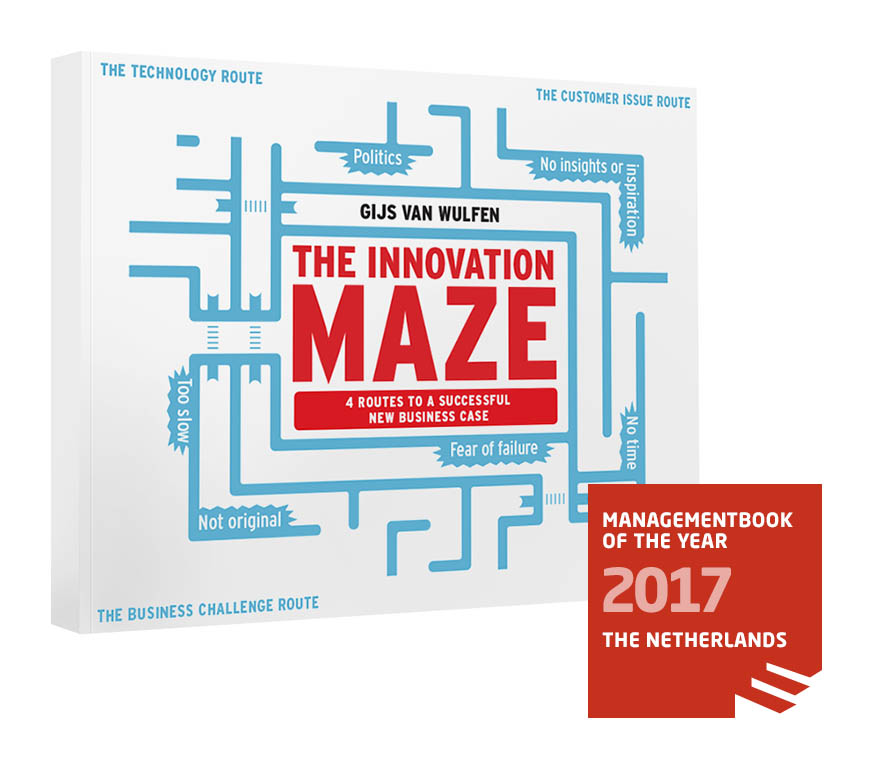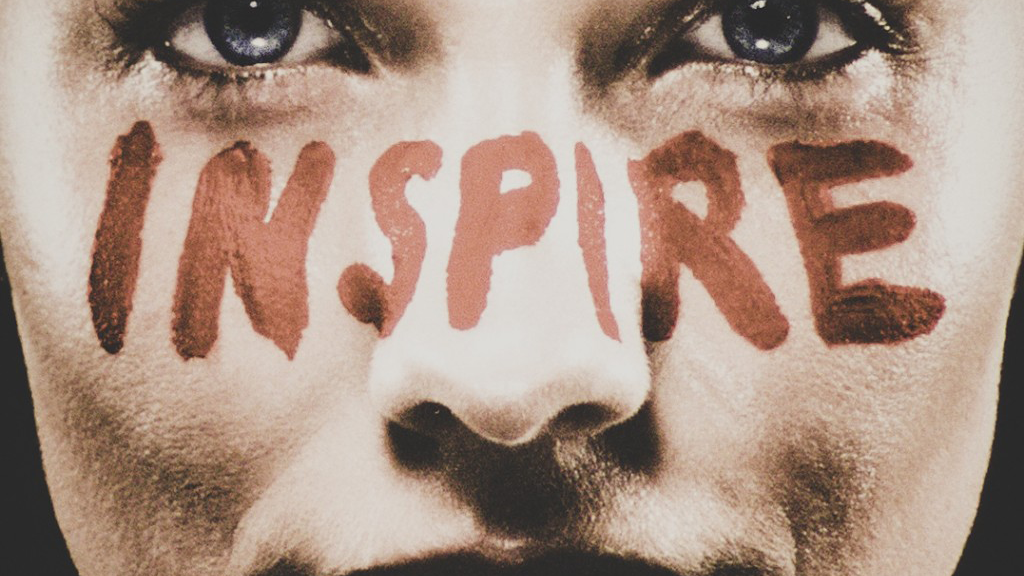A New Model to Start Innovation
WoW. I am so happy and honoured that my book ‘The Innovation Maze‘ (in Dutch) has been awarded as ‘Management Book of The Year 2017’ by Managementboek.nl. That’s why I am sharing with you the following highlights of The Innovation Maze.
15 obstacles are hindering innovation at its start
As speaker on innovation I have been traveling around the world meeting innovators, managers and CEOs in different cultures: from Canada to Cape Town; and from Turkey to Tokyo. I start my workshops asking them the direct question, “What are your main struggles at the start of innovation?” From all these workshops I identified fifteen obstacles which may block you during the fuzzy front end along the path towards a successful new business case:
- Unclear strategy
- No priority for innovation
- No market need
- No insights or inspiration
- No time
- Lack of resources
- No internal support
- Politics
- Insufficient skills
- Fear of failure
- No fit
- Too slow
- Not feasible
- No business model
- Not original
Innovation starts with an idea, a technology, a problem or a business issue
Now we nailed all the problems at the fuzzy front end, let’s work on the solution to unfuzzy it. The way innovation starts is diverse. There are four common patterns how you start innovation.
- You start innovation with a idea, like Brian Chesky and Joe Gebbia of AIRBNB. When a major design conference came to town in 2007, they saw an opportunity to earn some extra cash by renting out their spare floor space. In no time they had put together a website advertising lodging for overnight guests which they called “Airbed and Breakfast”.
- You start innovation triggered by technology, like Google X research lab, which explores new technologies beyond Google’s core business, with for example their Google Glass experiment.
- You start innovation to solve a problem, like two students in Sweden, Anna Haupt and Terese Alstin. The prospect of being forced by law to wear a bicycle helmet caused them great concern, as they wouldn’t “be caught dead wearing a polystyrene helmet.” They started developing a bicycle helmet that people would be happy to wear.
- You start innovation because your business needs to innovate, like toy-producer LEGO when in 1998 they generated their first loss in the company’s history. In response to this crisis, the company announced the lay-offs of 1,000 employees and put innovation on their agenda.
The front end of innovation ends with a well-founded new business case
I learned that to convince the management of an organization or (in)formal investors to let your innovative idea enter the formal development process and give you the resources needed, you must bring to the table a well-founded convincing new business case. Now the crucial word in the last sentence is ‘convincing’. This means you really must know your stuff. In the boardroom your idea will be evaluated from at least four perspectives:
- The customer: will they buy it?
- The technology: can we deliver it?
- The business model: will it pay off?
- The risk: What if it’s a failure? What if it’s huge success?
The board will demand tangible proof before making a decision. That makes the front end of innovation so challenging and intensive. In practice it will take at least ten activities to take you to this desired outcome in a structured way.
10 essential activities to unfuzzy your front end
- Ideate: Generating and choosing original relevant ideas for a product, service, process or experience.
- Focus: Defining your innovation center-of-interest including all the boundary conditions.
- Check Fit: Checking if your idea, technology, customer issue or business challenge fits your personal and corporate priorities.
- Create Conditions: Organizing the right moment, the right team, the right pace and the right funding for your innovation initiative.
- Discover: Discovering trends, markets, technologies and customer insights.
- Create Business Model: Creating a viable business model.
- Select Technology: Identifying and selecting the right technology to deliver your new product, service, process or experience.
- Check Freedom to Operate: Checking if you do not infringe intellectual property rights of others.
- Experiment: Carrying out a systematic research or test which validates the adoption and attractiveness of your new product, service, process or experience.
- Create New Business Case: Creating a well-founded convincing business case for your new product, service, process or experience.
Pick the Right Route and Stay flexible
In ‘The Innovation Maze’, you find both the 15 obstacles and the 10 activities essential for the start of innovation. The maze has four entry points.
- Idea – A rough business idea or a great business opportunity
- Technology – A new technology that sparks innovation
- Customer problem – A problem or a pain point
- Business challenge – An external or internal change that jeopardizes the future of the business
Each of the four innovation routes contains all ten activities. The great news is that whether you start with an idea, a technology, a customer issue or a business challenge you can use the same activities and the same tools. The order in which the ten activities are undertaken depends on how you start innovation. Be aware that doing things in the right order has a huge impact on the effectiveness.
Here’s an example of the Idea Route:
You can download a free pdf of all the 4 four routes.
Wishing you lots of success navigating the innovation maze.
Do you like this post? Then, check out Gijs van Wulfen’s new innovation bestseller at: Amazon UK or Amazon US.
[i] https://en.wikipedia.org/wiki/New_product_development#Fuzzy_Front_End
[ii] Prof. Dr. Cornelius Herstatt, Dipl.-Ing. Birgit Verworn, August 2001,
https://www.tuhh.de/tim/downloads/arbeitspapiere/Arbeitspapier_4.pdf








